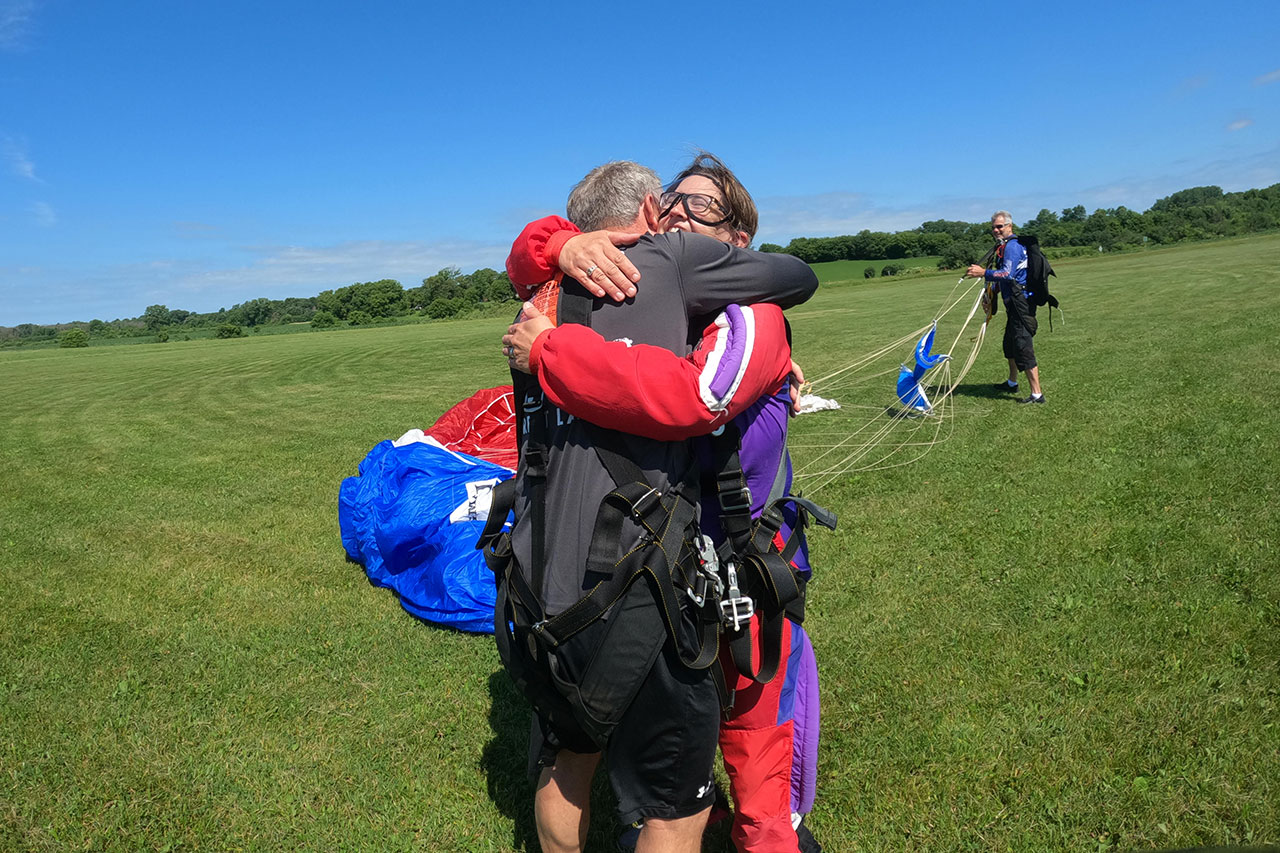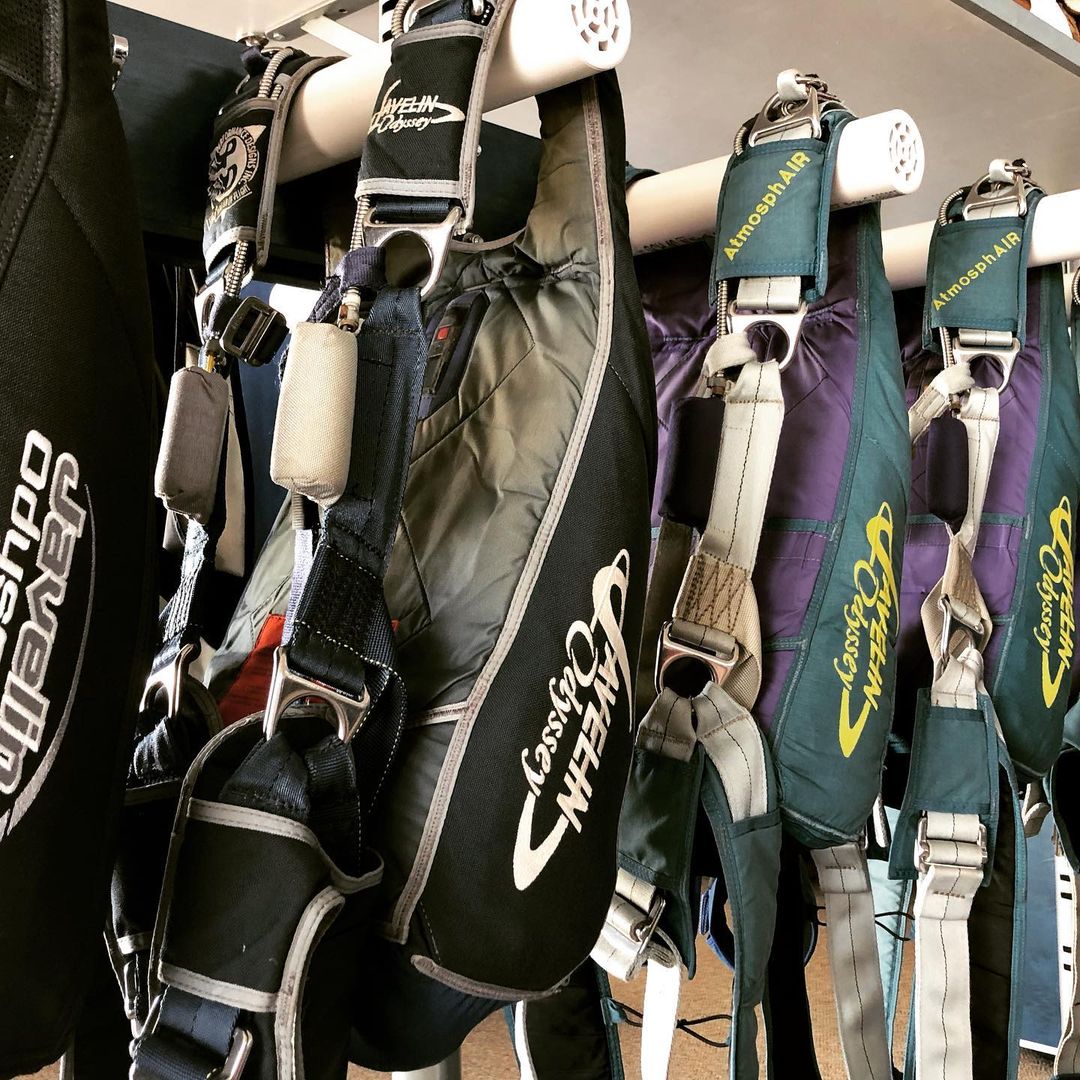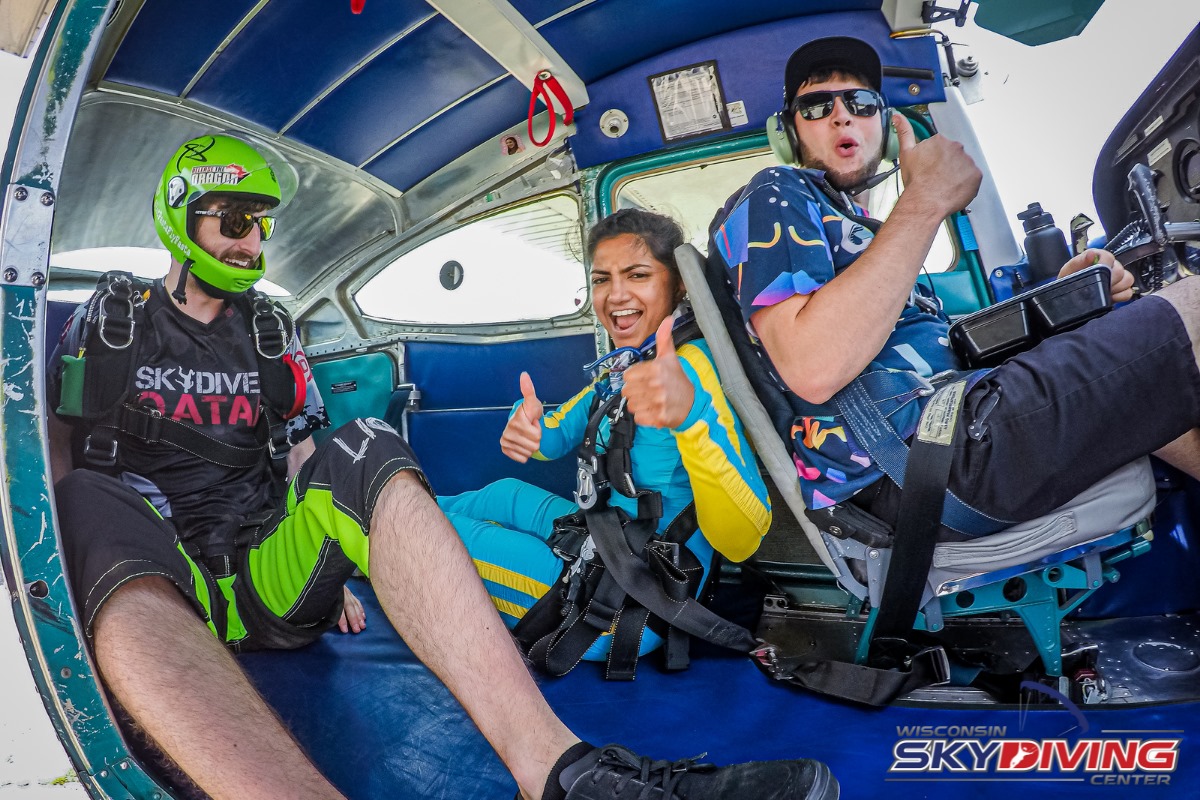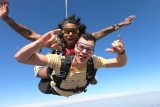How Many People Die Skydiving Each Year?
Skydiving Safety
Posted by: Wisconsin Skydiving Center 6 months ago
How Many People Die Skydiving Each Year?
Skydiving is an extraordinary activity that comes with significant risks. While advances in technology, training, and protocols have reduced the frequency of accidents, it is essential to understand that skydiving is inherently dangerous. For anyone considering skydiving, the risks should be taken very seriously, and proper preparation is critical.
In an effort to be fully transparent about the risks of skydiving, let’s explore the number of skydiving deaths per year, delve into skydiving accident statistics, examine the most common causes of fatalities, and consider efforts within the skydiving community to mitigate these risks.

Number of Skydiving Deaths Per Year
What is the mortality rate for skydiving? The number of skydiving deaths per year may provide a sobering reminder of the risks associated with the sport. According to the United States Parachute Association (USPA), there were 10 fatalities recorded out of approximately 3.65 million jumps in 2023. This translates to about 0.27 fatalities per 100,000 jumps. This is the lowest recorded fatality index for skydiving since record keeping began back in 1961.
Is dying from skydiving rare? Statistically speaking, yes, but while dying from skydiving is considered “rare” compared to the total number of jumps, it is absolutely possible and should always be considered as a potential consequence. Every loss is a tragic reminder of the inherent dangers involved. Each incident highlights the need for continued vigilance, rigorous training, and adherence to safety protocols – which the majority of our community is extremely passionate about.
Skydiving Accident Statistics: Solo vs. Tandem Jumps
Understanding the nuances between solo and tandem skydiving can help shed light on skydiving safety statistics. Tandem skydiving – where a student is securely attached to an experienced instructor – is designed to minimize risks for first-time jumpers. The average number of tandem skydiving deaths per year over the last decade has been one per 500,000 jumps – making the odds of a tandem skydiving death 0.002% per 1,000 jumps. Tandem jumps have a lower incidence of fatal accidents compared to solo jumps. However, it is crucial to recognize that even tandem skydiving carries inherent risks that cannot be fully eliminated.
In solo skydiving – especially among experienced skydivers – the risks increase due to the technical nature of the activity. For example, experienced jumpers often use smaller, more maneuverable parachutes, which can be harder to control, particularly during high-speed landings. Even highly skilled jumpers are not immune to accidents. As far as injuries go, 6% of USPA member skydivers reported experiencing an injury that required medical treatment in 2023, the most common being ankle injuries during landings.

What is the Biggest Cause of Skydiving Death?
According to the USPA, the biggest cause of skydiving deaths are due to simple human error. Unlike the popular thought that skydiving deaths are because of equipment failures, most skydiving accidents occur because the skydiver was pushing the limits and made a tragic mistake while trying to land a perfectly functioning parachute.
USPA data from 2022 shows that 60% of skydiving deaths were due to parachute landing problems, with 40% of those deaths caused by making an intentional low turn while landing the parachute – usually trying to execute a high-performance parachute maneuver. Additionally, 50% of the skydiving deaths in 2022 were skydivers who were highly experienced with a D-license, having at least 500 jumps.
Another key issue is improper handling of parachute malfunctions. These malfunctions are categorized as either a total malfunction (parachute not activated or is activated but does not comply), or a partial malfunction (parachute is activated but not landable). Malfunctions can often trigger stress responses that have the power to distort time perception and delay emergency procedures – like deploying a reserve parachute. In some cases, experienced skydivers become complacent or overconfident, leading to critical errors while making advanced maneuvers that require intentional low turns (i.e. swooping).
This is why it is important for skydivers to maintain constant awareness, engage in continued education, and practice their emergency procedures so that if and when the time comes, they are prepared and know exactly what to do.

What are the Odds of Both Parachutes Failing?
Modern parachute systems are designed with multiple safety layers, including a reserve parachute and Automatic Activation Devices (AADs). The reserve parachute is a backup parachute that is carefully maintained and packed by a parachute rigger certified by the FAA (Federal Aviation Administration) every 180 days.
In the case of a parachute malfunction – such as line twists or any other situation that makes the parachute not steerable – the skydiver is trained to perform emergency procedures in order to deploy the reserve parachute. Statistically, accidents involving equipment failure are usually the result of the skydiver reacting poorly and not following these prescribed emergency procedures.
In 2023, an estimated 12% of USPA member skydivers reported using their reserve parachute. Some jumpers reported having to use more than one, which makes 4,913 the estimated total use of reserve parachutes in 2023.
The AAD as well as the Reserve Static Line (RSL), aid in automatically deploying the reserve parachute (if the skydiver has reached a certain speed and altitude) in the event the skydiver is unable to deploy their parachute for any reason.
Despite these advancements, the odds of both parachutes failing – while exceedingly rare – are not zero. Factors such as improper packing, poor maintenance, or unforeseen complications can contribute to dual parachute failures.
Efforts to Mitigate Skydiving Risks
As we can see, skydiving is indeed risky. However, it’s important to note that the whole reason we have these skydiving safety statistics to report on is because the USPA and the skydiving community as a whole cares very deeply about making skydiving as safe as possible. Gathering data like you see here, helps us pinpoint the biggest cause of skydiving injuries and deaths so that we can find ways to mitigate those risks even further.
Making constant improvements to skydiving equipment, giving proper skydiving training for new students, providing education opportunities for every skydiver (such as mentorships, coaching, organizing and camps), and weather monitoring to determine safe jumping conditions all contribute to a culture of safety and a community of competent and confident skydivers.

Is Skydiving Worth the Risk?
While these meticulous safety measures may have reduced fatalities, it’s important to recognize that the potential for accidents can never be fully eliminated. If you’re willing to take that risk, the benefits skydiving can offer are absolutely worth it. Skydiving offers unparalleled experiences that have the ability to improve your overall quality of life; mentally, physically, and spiritually.
For some, the thrill and sense of accomplishment outweigh the risks; for others, the inherent dangers are simply just not worth it. At the end of the day, you have to make an important choice that is deeply personal and depends on your individual tolerance for risk and passion for adventure.
It is important to us at Wisconsin Skydiving Center to take every precaution to educate each participant so that you are fully aware of the risks in order to help you make an informed decision. If you have anxiety but know that you definitely want to skydive, we offer a one-of-a-kind Rise Above Program that goes even deeper and helps individuals rise above their fear to experience true freedom.
If you have any further questions about skydiving and skydiving safety, our team is here to help! Contact us today for more information about the programs we offer, our equipment, and how to approach skydiving responsibly. And if you’ve weighed the risks and are ready to take the leap, book your jump! We can’t wait to jump with you. Blue skies!



